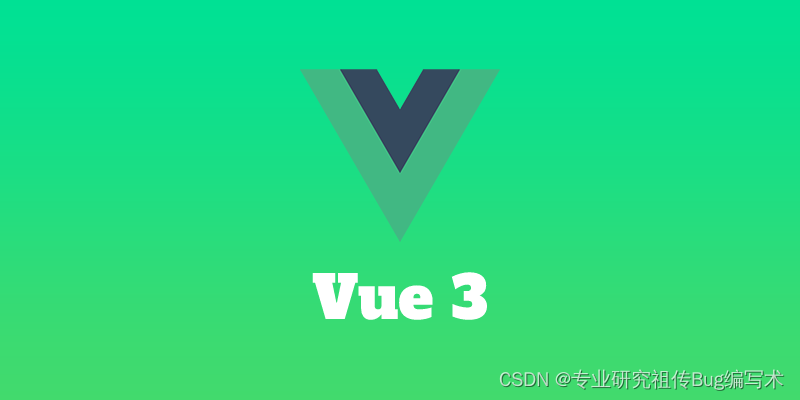详解Vue3中的插槽(slot)

本文主要介绍Vue3中的插槽(slot)。
在Vue3中,插槽(slot)是一种用于在父组件中向子组件传递内容的机制。它允许我们在子组件的模板中定义可插入的内容,并在父组件中传递具体的内容给子组件。
Vue3中的插槽相对于Vue2有一些重要的改进。在Vue3中,插槽有两种类型:作用域插槽(scoped slots)和默认插槽(default slots)。这两种插槽类型都可以通过<slot>元素在子组件的模板中定义。
一、在普通写法中使用插槽(slot)
作用域插槽
作用域插槽允许父组件向子组件传递数据,并在子组件中使用这些数据。在子组件中,可以使用特殊的v-slot指令来声明作用域插槽,并在插槽中访问父组件传递的数据。例如,以下是一个使用作用域插槽的示例:
<template>
<div>
<slot name="header" :message="message"></slot>
<slot></slot>
</div>
</template>
在父组件中,可以使用v-slot指令来为作用域插槽指定具体的内容。例如,以下是一个使用作用域插槽的示例:
<template>
<div>
<my-component>
<template v-slot:header="{ message }">
<h1>{{ message }}</h1>
</template>
<p>This is the default content</p>
</my-component>
</div>
</template>
在以上示例中,父组件为子组件的作用域插槽header传递了一个对象{ message },并在插槽中使用了这个传递的对象。
默认插槽
默认插槽是一种在子组件中定义的未命名的插槽。默认插槽不需要通过v-slot指令进行声明,而是可以直接在子组件的模板中使用<slot>元素。父组件中的内容会自动传递给默认插槽。例如,以下是一个使用默认插槽的示例:
<template>
<div>
<slot></slot>
</div>
</template>
在父组件中,可以将内容放在子组件标签中,这些内容会自动传递给子组件的默认插槽。例如:
<template>
<div>
<my-component>
<p>This content will be passed to the default slot</p>
</my-component>
</div>
</template>
在以上示例中,父组件的<p>标签中的内容会自动传递给子组件的默认插槽。
二、在setup写法中使用插槽:
在<script setup>语法中,可以使用defineProps定义父组件传递给子组件的props,可以使用slot插槽接收父组件传递的内容。
下面是一个示例,展示如何在<script setup>语法中使用slot插槽:
<!-- ParentComponent.vue -->
<template>
<ChildComponent>
<template #default>
<p>This is the content passed from the parent component</p>
</template>
</ChildComponent>
</template>
<script setup>
import ChildComponent from './ChildComponent.vue'
</script>
<!-- ChildComponent.vue -->
<template>
<div>
<h1>Child Component</h1>
<slot></slot>
</div>
</template>
<script>
export default {
name: 'ChildComponent'
}
</script>
在上面的示例中,父组件ParentComponent.vue使用<ChildComponent>标签包裹了一段内容<p>This is the content passed from the parent component</p>,并将其放在<template #default>标签内。在子组件ChildComponent.vue中,使用<slot></slot>标签定义了一个插槽,用来接收父组件传递的内容。在运行时,父组件的内容会被渲染到<slot></slot>处。
注意:<script setup>是Vue 3.2及以上版本中引入的新特性,需要使用Vue编译器进行编译才能正常使用。
Vue3中的插槽是一种非常强大的机制,它可以帮助我们更好地组织和复用组件。无论是作用域插槽还是默认插槽,都可以提高组件的灵活性和可复用性。
注意事项
在使用插槽(slot)时,Vue 3中有一些需要注意的地方:
-
新的插槽语法:Vue 3中引入了一种新的插槽语法,使用
<slot>标签来定义插槽,而不再使用<template v-slot>或<template v-slot:default>。使用新的插槽语法可以使代码更加简洁和易懂。 -
默认插槽:在Vue 2中,插槽默认被称为
<slot>,而在Vue 3中,默认插槽可以直接使用<slot>进行定义,无需添加任何参数。 -
具名插槽:在Vue 3中,通过在
<slot>标签上使用name属性来定义具名插槽。父组件可以通过<template v-slot:slotName>或<template #slotName>语法来指定具名插槽。 -
多个插槽内容:在Vue 3中,为了支持多个插槽内容,可以为插槽定义多个
<template>标签,并使用v-slot或#来指定对应的插槽名称。 -
作用域插槽:在Vue 3中,作用域插槽(scoped slot)被称为
<template v-slot:slotName="slotProps">或<template #slotName="slotProps">,其中slotProps是一个对象,包含了父组件传递给插槽的属性和方法。 -
插槽传递数据:在Vue 3中,可以使用
v-bind或:将数据传递给插槽。例如,可以使用<slot :data="data">来将data属性传递给插槽,然后在插槽内部使用<template v-slot:default="{ data }">来接收该属性。 -
默认插槽内容:在Vue 3中,可以使用
<slot>标签内的默认内容作为默认插槽的内容。如果父组件没有传递内容给默认插槽,那么默认内容将会被渲染。 -
动态插槽名称:Vue 3支持动态插槽名称,可以使用表达式作为插槽的名称。例如,可以使用
<slot :name="slotName">来动态指定插槽的名称。
需要注意的是,Vue 3的插槽语法与Vue 2的语法有所不同,因此在迁移项目或学习Vue 3时,需要注意这些变化。同时,插槽是组件化开发中非常重要的特性,合理且灵活地使用插槽能够提高组件的复用性和可扩展性。
本文来自互联网用户投稿,该文观点仅代表作者本人,不代表本站立场。本站仅提供信息存储空间服务,不拥有所有权,不承担相关法律责任。 如若内容造成侵权/违法违规/事实不符,请联系我的编程经验分享网邮箱:chenni525@qq.com进行投诉反馈,一经查实,立即删除!
- Python教程
- 深入理解 MySQL 中的 HAVING 关键字和聚合函数
- Qt之QChar编码(1)
- MyBatis入门基础篇
- 用Python脚本实现FFmpeg批量转换
- 12-网络安全框架及模型-网络生存模型
- Redis设计与实现之压缩列表
- RabbitMQ
- MySQL视图
- 接口文档管理工具(yapi的使用)
- 13|代理(下):结构化工具对话、Self-Ask with Search以及Plan and execute代理
- 5D动感影院新奇体验丰富环境特效7D互动影院
- 【Android 10】应用全屏
- NOI数学 学习 相关书籍及视频等资料(不包括CTS内容)
- 解决:已经安装open3d,还是报错No module named ‘open3d‘的问题